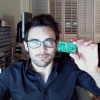
A team of researchers at the University of Bern has managed to considerably prolong the lifespan of flies by activating a gene which destroys unhealthy cells. The results could also open new possibilities in human anti aging research.
Immortality has long been a dream for humans. For example, in many ancient mythologies, immortality is one of the traits that distinguishes humans from the gods. More recently, biological research has tried to prolong human lifespan using model organisms such as mice or flies. Researchers at the Institute of Cell Biology from the University of Bern in Switzerland, led by Eduardo Moreno, have developed a new method to extend lifespan of flies based on improved selection of the best cells within the body. Their work appeared in the journal Cell.
"Our bodies are composed of several trillion cells," explains Moreno, "and during aging those cells accumulate random errors due to stress or external insults, like UV-light from the sun." But those errors do not affect all cells at the same time and with the same intensity: "Because some cells are more affected than others, we reasoned that selecting the less affected cells and eliminating the damaged ones could be a good strategy to maintain tissue health and therefore delay aging and prolong lifespan."
A cellular quality control mechanism
To test their hypothesis, the researchers used Drosophila melanogaster flies. The first challenge was to find out which cells within the organs of Drosophila were healthier. Morenos team identified a gene which was activated in less healthy cells. They called the gene ahuizotl (azot) after a mythological Aztec creature selectively targeting fishing boats to protect the fish population of lakes, because the function of the gene was also to selectively target less healthy or less fit cells to protect the integrity and health of the organs like the brain or the gut.
Normally, there are two copies of this gene in each cell. By inserting a third copy, the researchers were able to select better cells more efficiently. The consequences of this improved cell quality control mechanism were, according to Moreno, "very exciting": The flies appeared to maintain tissue health better, aged slower and had longer lifespans. "Our flies had median lifespans 50 to 60 percent longer than normal flies," said Christa Rhiner, one of the authors of the study.
Could azot also slow down the human aging process?
However, the potential of the results goes beyond creating Methuselah flies, the researchers say: Because the gene azot is conserved in humans, this opens the possibility that selecting the healthier or fitter cells within organs could in the future be used as an anti aging mechanism. For example, it could prevent neuro- and tissue degeneration produced in our bodies over time.
Story Source:
The above story is based on materials provided by University of Bern. Note: Materials may be edited for content and length.
Journal Reference:
- Marisa M. Merino, Christa Rhiner, Jesus M. Lopez-Gay, David Buechel, Barbara Hauert, Eduardo Moreno. Elimination of Unfit Cells Maintains Tissue Health and Prolongs Lifespan. Cell, 2015; DOI: 10.1016/j.cell.2014.12.017
Edited by niner, 16 January 2015 - 02:14 PM.










































